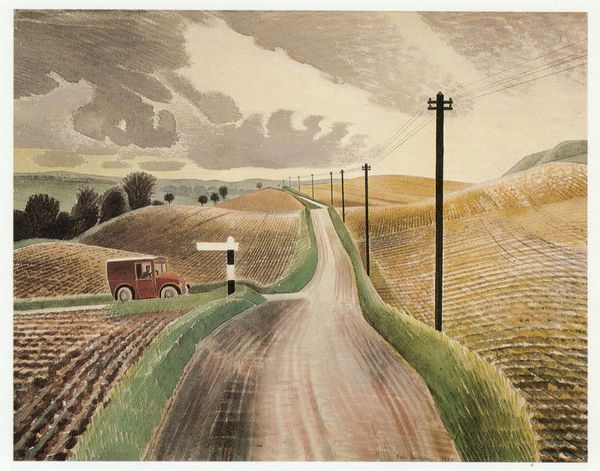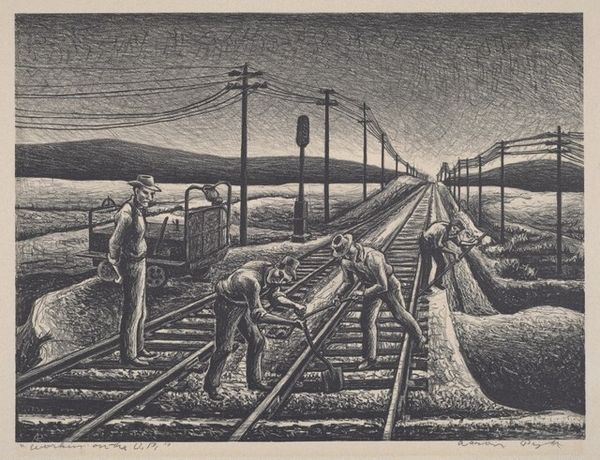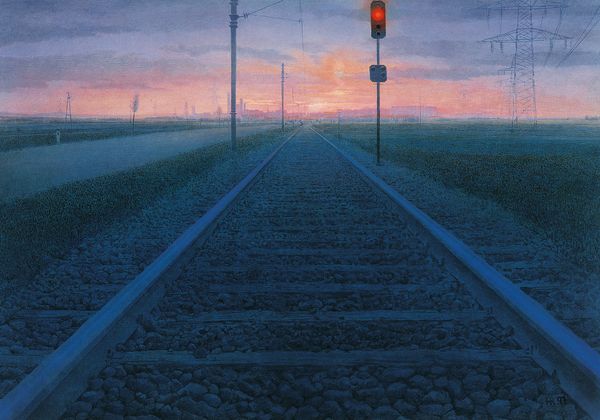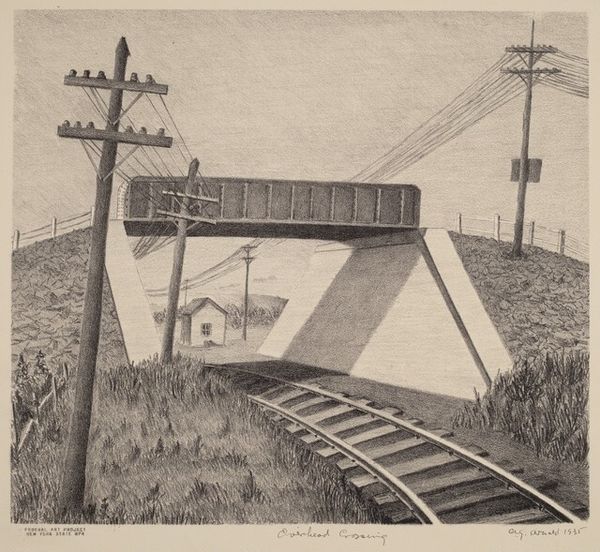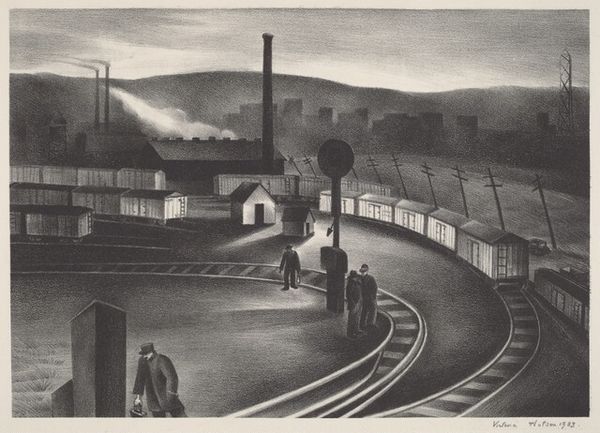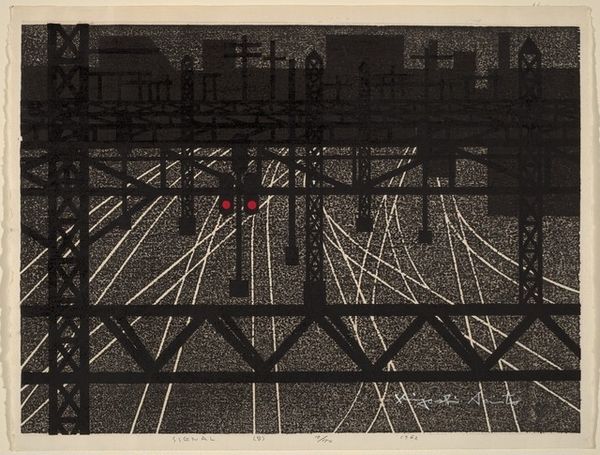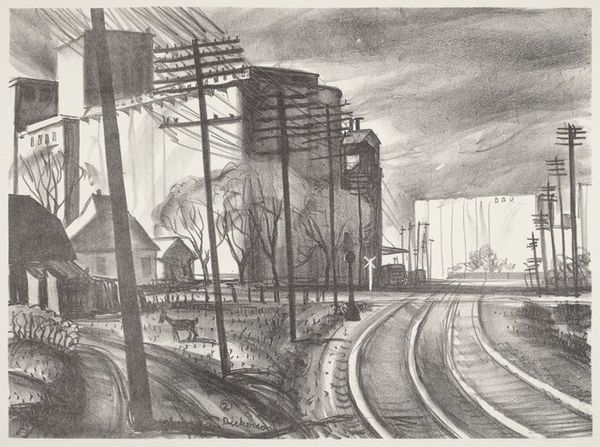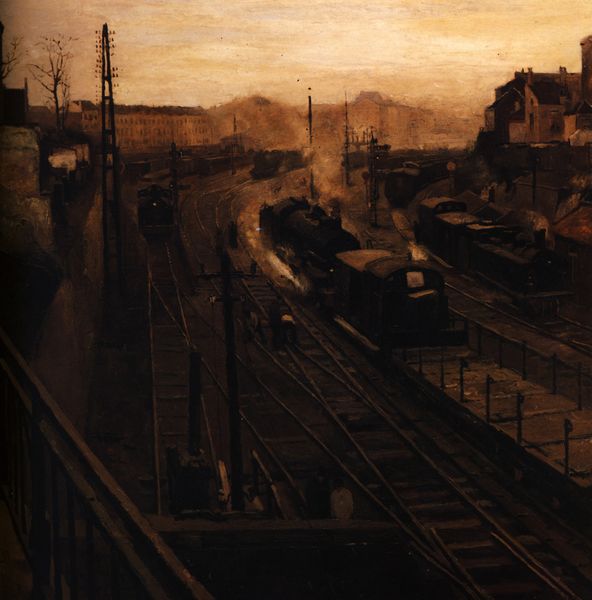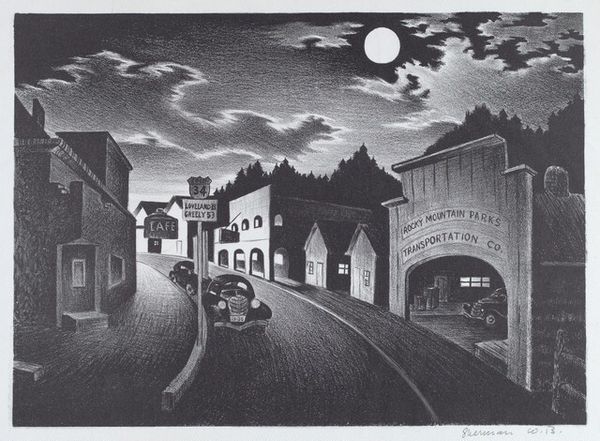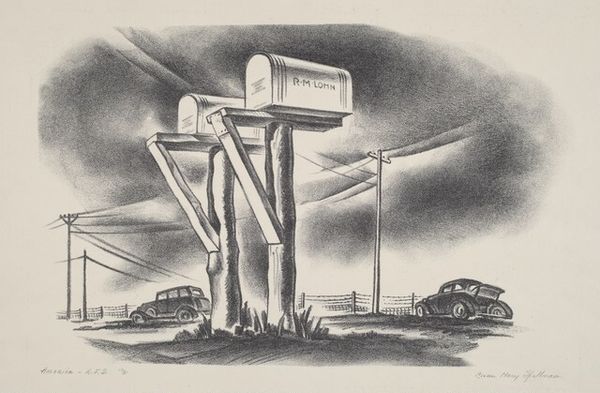
painting, oil-paint
#
painting
#
oil-paint
#
landscape
#
coloured pencil
#
urban art
#
cityscape
#
modernism
#
watercolor
#
realism
Copyright: František Hudeček,Fair Use
Editor: This is František Hudecěk's "Railway Station With Windmill," painted in 1941, using oil paints. There’s a stillness about it that is sort of eerie, and yet peaceful too. The image seems caught between the past, represented by the windmill, and the more recent development of the railway. What do you see in this piece? Curator: That stillness you mention resonates deeply, especially when considered in the context of 1941. I see this work as a meditation on progress, industry, and perhaps a quiet commentary on encroaching change, framed in a very specific cultural memory. Notice how the railway, typically a symbol of forward momentum, seems almost frozen. And how does the windmill function here? Is it a relic or something more potent? Editor: A relic, definitely, a reminder of an older, more agrarian way of life fading away. But the dark color and stiff shape does not exactly makes one feel nostalgic for the good old times. Curator: Indeed. And is this simply nostalgia? Or does the artist use this fading structure to highlight the tension between nature and technology, especially as experienced during wartime? Think about the visual weight: The signaling equipment and station structures loom large. There is more than meets the eye in what seems to be simple architectural or landscape imagery. Does this intersection suggest an elegy for a changing world, heavy with industrial ambitions? Editor: The idea of elegy makes sense; there's a definite somber quality. The color palette definitely plays a role, with its almost oppressive greenish hues. So maybe instead of an ode to progress it is a subtle comment about destruction, especially considering the painting's date. Curator: Precisely. Hudecěk’s use of symbols opens layers of interpretation. It reminds us that art is often a repository of cultural memory and psychological response to societal transformations, presented via familiar and, on the surface, banal things. Editor: I never considered how powerful even everyday objects could be, not only on their own but because of their symbolic juxtaposition with other elements. This reminds me to engage more deeply with details in similar art pieces!
Comments
No comments
Be the first to comment and join the conversation on the ultimate creative platform.
